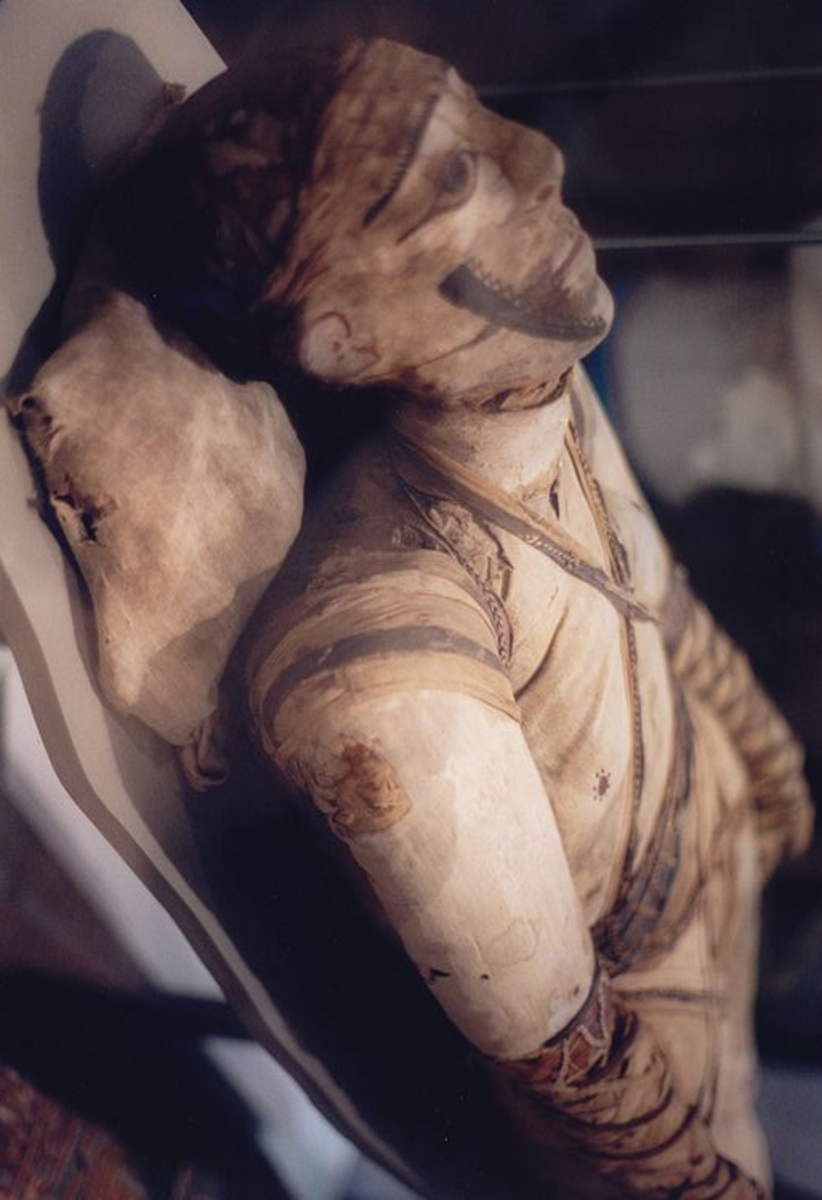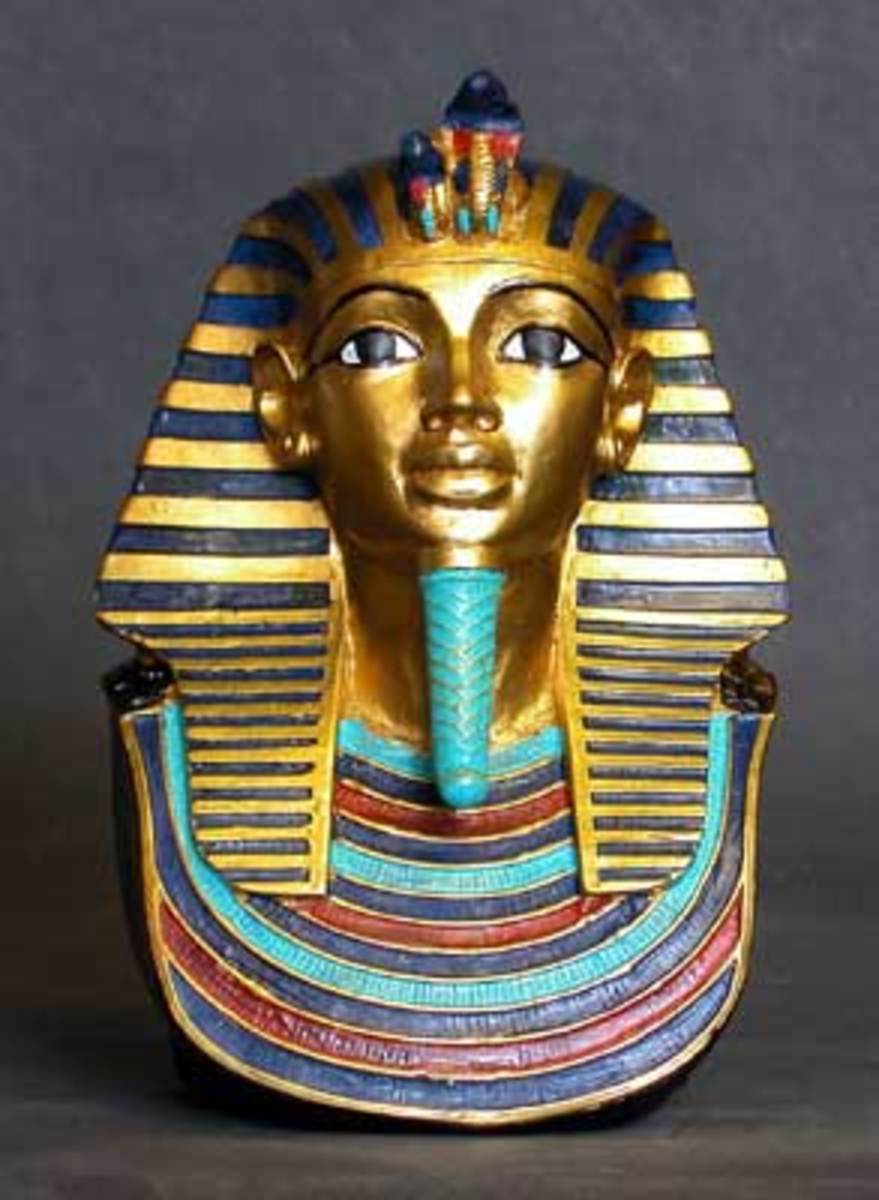Out Of Egypt: Mummification Practices From Around The World
Quick! Which is the oldest culture known to have deliberately mummified the dead? Did you think of Ancient Egypt? Actually, the oldest known intentional mummy was discovered in South America! And this is not the only time ritual mummification has been discovered outside of Egypt.

Terminology
In general, there are two classifications for mummies: Anthropogenic or Spontaneous.
Anthropogenic mummies are those that were created intentionally by humans, usually as a ritual or cultural practice. The famous Ancient Egyptian mummies are an example of anthropogenic mummies.
Spontaneous mummies were created naturally, normally as a result of the environment where they were buried. An example of spontaneous mummification are the "Bog Bodies" discovered across Europe.
How do we know a mummy was deliberate?
While many mummification techniques vary, there are a few hallmarks that help to separate an anthropogenic (or man-made) mummy from a spontaneous one. Preserving a body in ancient times was incredibly difficult, as the natural process of decay sets in very soon after death. To avoid this, many cultures would remove the internal organs, which contain a lot of bacteria that break down flesh and blood. Anthropologists look for clean, surgical-like cuts on the body where the organs would have been removed, as opposed to large, jagged openings that could have been caused by animals.
The clothing and artifacts that are left with a mummy can also be a clue to whether or not preservation was intentional. Some cultures, such as the Guanche, would rub bodies with resin and wrap them in animal skins after removing the organs. Others, such as the Aztec, would bundle the dead in cloth bags and place beautifully decorated masks over the face.
Other traits that indicate a mummy was intentional include evidence of "smoking" in order to dry a body out to protect it from decay, as well as items deliberately placed inside the abdominal cavity such as cloth, plants, or sand. Of course, each culture had its own unique methods and rituals, as you are about to read!
Terminology
Desiccate is a word to describe something that is made to be extremely dry. In the case of most anthropogenic mummies, dryness was key to preserving the body.
Chinchorro
The Ancient Chinchorro people of what is now Chile began to mummify their dead nearly 2,000 years before the Egyptians. Virtually all bodies that have been linked to the Chinchorro culture from this time period have been intentionally mummified. In preparation for mummification, the internal organs of the dead were removed, as was the skin. Sometimes the corpses were decorated in lavish paint or dressings (even their own skin!), though others were left bare. After preparation, the bodies were left to naturally desiccate (or dry-out) in the harsh, dry climate of the Atacama desert.

Guanche
Prior to the 1400's, the Guanche people of the Canary Islands practiced a method of mummification that is quite similar to that of the Ancient Egyptians. Specialized groups of men or women (depending on the gender of the deceased) would prepare the body by removing the internal organs, then filling the empty cavity with a mix of mud and plant material like tree bark or moss. The skin was then covered in tree resins and wrapped in local animal hides. Afterward, the body was dried either in the sun or by smoking over a fire. Finally, the new mummies were either buried in the sand, or left in caves, depending on their social status.
Discover More:
The Capuchin Catacombs of Palermo
While the unique environment of Italy has been known to lead to spontaneous mummifications, the Catacombe dei Cappuccini in Palermo is one of the very few places in Europe that host examples of intentional mummification. Beginning in 1599, the monks of the monastery mummified deceased friars by a process of evisceration, packing the cavities, and then slowly drying them on racks in the catacombs. Sometimes they were washed in vinegar afterward, in an attempt to further leech moisture from inside the body. Mummies were dressed in their contemporary uniforms, then carefully displayed in the catacombs (often times in a standing position).
Later on, local peoples desired to be preserved in the catacombs as well. These were usually wealthy individuals, who would request to be mummified and displayed in their best garments. Interments continued until the 1920s, when the monastery finally refused any further burials. One of the most famous of these final burials was that of a toddler named Rosalia Lombardo, who was seemingly perfectly preserved by a master embalmer.

Aztecs
Mummification was such an important part of Aztec culture that mummies were actually included in their hieroglyphics to symbolize death. Unlike many other traditions, these were actually preserved in a seated position, bound with rope, and carefully wrapped or placed in cloth bags. A ceremonial mask was then placed over the face.
Torres Strait
Another culture that mummified the dead in a seated position, as opposed to lying down, were the indigenous tribes of the Torres Strait. These bodies were removed of viscera and dried on platforms, either in the sun or by smoking. Tribes that preferred the smoking method would occasionally collect the fat that was drained from the body and then mix it into a red paint. This paint would then be applied back onto the skin of the mummy. Finally, they would be dressed in their usual clothing and buried.
Would you consider having yourself mummified?
Modern Day Mummies
The study of ancient mummies has inspired renewed interest in the techniques. As a result, many people have actually willed their bodies to science in order to be preserved as a mummy. One example of this is the case of Alan Billis, who had his mummification filmed for a British documentary. Besides scientific purposes, an organization known as Summum makes a commercial business out of mummification.
As can be seen, mummification was a wide-spread practice before and after the Ancient Egyptians discovered how to preserve their dead. Interest in this process continues to rise, leading some to even go as far as having their beloved pets, or even themselves, mummified. Who knows? Maybe a few hundred years from now future archaeologists will be extracting modern-day mummies from the ground to put on display in floating space museums.
Discover More:

© 2014 JJ Heathcoat









